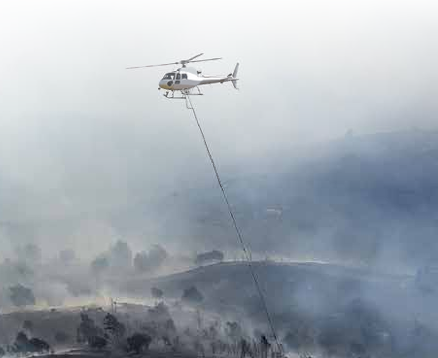Will the U.S. Face Its Own ‘Black Summer’ Before Aerial Firefighting Gets the Overhaul It Desperately Needs?
What a season it has been, from record-breaking early devastating fires to the first PL5 declaration this late in the season since the 1990s. Yet, despite how close the transition to a "fire year" versus a "fire season" has become, the same recurring issues continue to endanger people living in fire-prone areas.
The aerial firefighting apparatus, from the rule makers to the decision makers, the contracting officers, and those responsible for ordering contract fleets that help combat these ever-increasing fires on both state and federal levels, continue to make mistakes that could cost lives.
In this situation, those in key positions hear concerns from various sources, including operators and ground crews. After years of listening to these perspectives, it is clear that the problems are widespread and that decisions made at the federal level often lack logic. For example, contracts are sometimes terminated prematurely, only for the same resources to be called back into service after having traveled long distances, wasting valuable time.
When asked why these decisions persist, the answers vary. Some cite tradition with the phrase, "That's the way it's always been done," while others claim no one wants to be held responsible for making crucial decisions. These explanations are frustrating and point to a larger issue.
The challenges the industry has faced this year are extensive. Ensuring that sufficient firefighting assets are available at a moment’s notice and that they are stationed in appropriate locations is crucial, yet these processes remain disorganized.
Reports from the field indicate that aircraft carding was again problematic this year. Excuses ranged from a lack of carding staff to insufficient funds for inspectors to travel and perform necessary evaluations. Additionally, there were instances where aircraft were released from contracts, yet the federal system still showed them as assigned, preventing their re-tasking. In one case, this meant that available resources could not respond to an active fire, despite several aircraft being idle but unable to be reassigned due to bureaucratic red tape. Despite numerous calls, no one took action, and America continued to burn while assets sat unused.
The question remains: what will it take to catalyze fundamental change at the federal level? Will it require an act of Congress to streamline the coordination between agencies, ensuring that when one drops the ball, the others can keep it rolling? Or will it be an internal government shift where people finally start working together instead of against one another—whether agency vs. agency or agency vs. contractor?
This is why many choose to engage with organizations like UAFA, hoping to be part of the solution. By surrounding themselves with industry experts, they aim to contribute to real change within the industry, a process that has already begun. Though outward signs of progress may not be immediately visible, UAFA continues to collaborate with federal and state agencies to improve the aerial firefighting sector.
One hopes that the United States does not have to experience a tragedy like Australia’s "Black Summer" of 2019/2020, where massive loss of life and property spurred reform. As fire seasons worsen, it becomes increasingly important for meaningful changes to be made proactively rather than waiting for disaster to force the issue.
Fly Safe!






